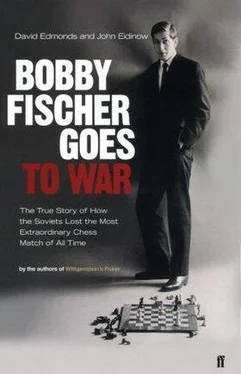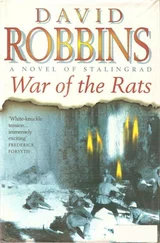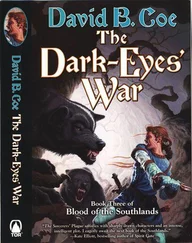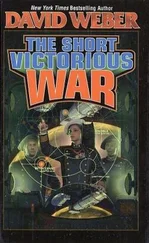I don’t believe in psychology. I believe in good moves.
— BOBBY FISCHER
There is nothing abnormal about a chess player being abnormal. This is normal.
— VLADIMIR NABOKOV
 How can we begin to understand what goes on inside the minds of world-class players while they are moving pieces on the sixty-four squares of the chess board for hour after hour, game after game, week after week? Months of preparation, mental and physical, precede so grueling a contest as Reykjavik. What resources of skill, intellect, memory, and imagination, of stamina and courage, does a match require?
How can we begin to understand what goes on inside the minds of world-class players while they are moving pieces on the sixty-four squares of the chess board for hour after hour, game after game, week after week? Months of preparation, mental and physical, precede so grueling a contest as Reykjavik. What resources of skill, intellect, memory, and imagination, of stamina and courage, does a match require?
The British Broadcasting Corporation archives contain a clue in a unique recording of a 1930s interview with Alexander Alekhine. Alekhine is preparing for his title challenge with Max Euwe, the only authentic amateur to become world champion. (Nearly four decades later, as president of FIDE, the sport’s governing body, Euwe will preside over the Fischer-Spassky match.) In the precisely enunciated, beautifully modulated diction of the day, the interviewer asks whether Alekhine does not by now know all the combinations in chess. His voice high-pitched and heavily accented, Alekhine replies, “Oh no, believe me, a lifetime is not enough to learn everything about chess.”
Like Fischer, Alekhine was a chess fanatic and loner. He lived and breathed chess; he was fiercely competitive, constantly seeking self-improvement, capable of turning violent on the rare occasions that he suffered defeat. His knowledge of the openings was unsurpassed. In Alekhine’s time, opening preparation could take elite players up to around move nine or ten, before the game spun off in a novel direction. By the early 1970s, theory had progressed to the extent that often the first fifteen moves would be familiar. Now, in their remarkable memory banks, assisted by computer databases, the chess elite can shuffle through a mental card index consisting of both published games and home-based spadework that may cover them to move twenty-five or beyond. Up to this point they will recognize each position after each move from a game already played, the published analysis of a game already played, or their own private study.
Eventually, however, the sheer immensity of possibilities will land both players in uncharted territory. Indeed, that a board game can generate such intricacy is the real marvel of chess.
Writers trying to convey this complexity have their own pet mathematical picture or comparison to illustrate the scale of the numbers involved. Thus, in Fields of Force, his book on Fischer-Spassky, George Steiner states that there are 318,979,584,000 legitimate ways to make the first four moves. It is said that there are more possible variations in a game of chess than there are atoms in the universe (roughly 10 80) and seconds that have elapsed since the solar system came into existence (roughly 2×10 17). As for chess, it is estimated that there are approximately 25×10 116ways for a game to go.
This is the figure for theoretical permutations within the rules of the game. But for any given position, the serious player can immediately rule out of consideration the majority of legal possibilities. Take the opening move. White can advance any of its eight pawns one or two squares and can move each of its knights either to the center or to the side of the board. That is twenty legitimate moves in all. But in fact, almost all serious games begin with a two-move thrust of the king’s, queen’s, bishop’s pawn or the king’s knight to the center. So only four of these twenty moves are regularly played.
Even so, one can see how the possible variations soon spiral beyond ordinary comprehension. Assume that in a typical middle-game position there are eight sensible continuations for each player on each move. Over the next five white moves and five black moves, there will be 8×8×8×8×8×8×8×8×8×8 permutations (8 10), or 1,073,741,824; that is more than 1 billion paths down which the game could plausibly twist and turn.
How does a chess player cope with the huge size of the chess cosmos? A layperson might assume that the answer lies in sheer computational ability, and that good chess players are those who can calculate further ahead than mediocre ones. And of course there is some truth in this—though not much. Staring at the board and crunching through the possibilities can get one only so far, for there are simply too many branches on what is a near infinitely sized tree. Today’s computers can calculate millions of moves per second. Yet they still struggle against the human insights of the leading grandmasters.
The real explanation of what chess players do is less rational. It is closer to what we might think of as an artist’s vision and has to do with a kind of intuition. A chess player examining a position sees not an inanimate set of carved or molded pieces waiting to be moved from square to square, but diagonals and ranks and latent possibilities, what Arthur Koestler described as “a magnetic field of forces charged with energy.”
Why do grandmasters recognize that at a certain point in the game, a knight should be positioned on the f5 square rather than c4 or d5? Obviously they might foresee that in certain variations, a knight on f5 defends a crucial square, or threatens a particular combination of moves, or supports a particular maneuver. Or it might be that f5 acts as a temporary staging point for the knight’s ultimate destination. However, there can be both more and less to it than that. Grandmasters somehow “feel” that f5 is the right square; it satisfies their conception of the game, fitting into some kind of deep, unarticulated structure. The German grandmaster Michael Bezold spent several months playing chess with Fischer in the 1980s. “He just felt that a certain move was the right move without calculation. And after analyzing, we saw it was the right one.” The Cuban-born José Capablanca, world champion from 1921 to 1927, was noted for relying on his intuition but reproached himself for this, as though his innate sense for the game were in some way reprehensible—or less admirable than an approach of pure calculation.
An analogy between chess and mathematics or music may be instructive. All three pursuits regularly produce prodigies—those marvelously gifted and precocious beings so rarely found in the worlds of painting or poetry, drama or literature, ballet or bel canto, or in other forms of art where raw talent needs to build steadily on experience and developed sensitivity. It is barely conceivable that a fourteen-year-old would have a sufficient range of emotions and experience to write War and Peace or paint Guernica. But he or she could play Elgar’s violin concerto, propose a mathematical proof, or become U.S. chess champion. Genius in chess is a magical fusion of logic and art—an innate recognition of pattern, an instinct for space, a talent for order and harmony, all mixed with creativity to fashion surprising and hitherto new formations. Max Euwe said of Alekhine, “He is a poet who creates a work of art out of something that would hardly inspire another man to send home a picture postcard.”
Comparing the beauty of chess and music, Harold Schonberg, the senior music critic of The New York Times, wrote, “If chess were as popular as music, if as many people responded to its subtleties and nuances, the masterpieces of Steinitz, Capablanca, Alekhine, Botvinnik, and Fischer would not be held far below the masterpieces of Bach, Mozart, Beethoven, and Brahms.”
The creative imaginations that go into a great chess game and a great piece of music are closely allied. Spassky has been called the Mozart of chess; like Mozart’s music, his chess was a brilliantly fluid combination of form and fantasy. He himself took pride in being labeled the “Pushkin of chess,” explaining in a Yugoslav magazine that it was “because of my elegant and harmonic style, I suppose.” Musicians are often good chess players and vice versa, while mathematicians often excel at both chess and music. Mathematicians see in certain equations the artistic beauty that chess players see in certain combinations. Max Euwe trained as a mathematician. A law in vector theory is named after the early-twentieth-century German world champion Emanuel Lasker. Mark Taimanov is a virtuoso concert pianist.
Читать дальше

 How can we begin to understand what goes on inside the minds of world-class players while they are moving pieces on the sixty-four squares of the chess board for hour after hour, game after game, week after week? Months of preparation, mental and physical, precede so grueling a contest as Reykjavik. What resources of skill, intellect, memory, and imagination, of stamina and courage, does a match require?
How can we begin to understand what goes on inside the minds of world-class players while they are moving pieces on the sixty-four squares of the chess board for hour after hour, game after game, week after week? Months of preparation, mental and physical, precede so grueling a contest as Reykjavik. What resources of skill, intellect, memory, and imagination, of stamina and courage, does a match require?










